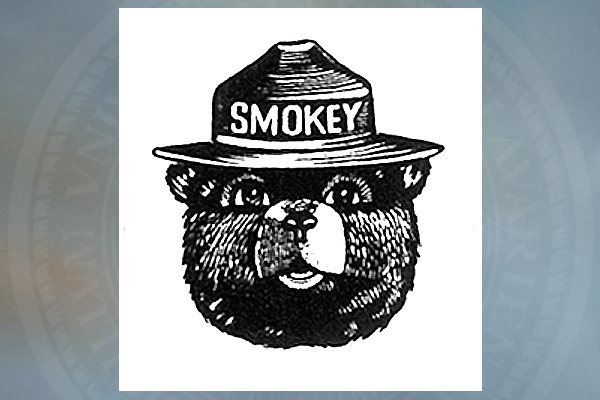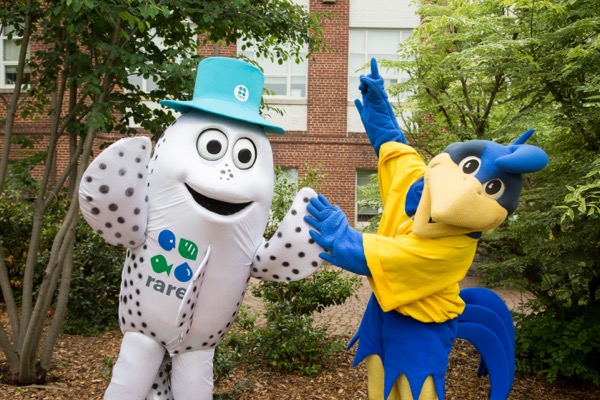


Cheer or fear
Study finds conservation mascots effective in more ways than one
12:02 p.m., Sept. 21, 2015--Smokey Bear has spent decades reminding picnickers “only you can prevent forest fires” and has even been known to cry over the devastation they leave in their wake. University of Delaware researchers say the cartoon bear illustrates how mascots can most effectively protect the environment – by threatening disappointment.
New findings show adults are less likely to pollute when conservation information is presented to them by a mascot. And, they are most likely to make the right choice when it prevents the fuzzy creatures from being sad.
Research Stories
Chronic wounds
Prof. Heck's legacy
Some conservation groups, such as the non-profit organization Rare, have been using mascots for years as part of their “pride” campaigns throughout the world, helping protect endangered species, develop sustainable fisheries, and improve water quality by tapping into residents’ pride in their communities.
Brett Jenks, Rare’s president and CEO, said that “while mascots, parades, festivals and other common elements of pride campaigns may be great for attracting media coverage, some skeptics question their effectiveness at getting landowners or fishermen to truly exchange some of their short-term profit for environmental preservation.”
Rare turned to researchers at the University of Delaware to test in a controlled laboratory setting the core question of whether mascots really can inspire new behaviors that benefit the environment, something it has seen play out in hundreds of pride campaigns around the globe.
So Kent Messer, co-director of the Center for Behavioral and Experimental Agri-Environmental Research in the University’s College of Agriculture and Natural Resoruces, and his economics colleagues, Julie Butler, assistant professor, and Jacob Fooks, a recent graduate, set up a test involving 168 UD students.
“Frankly, as an economist, I was skeptical that a smiley-faced, goofy-looking mascot could do anything to help the environment,” Messer said. “My children might want me to pay to have their pictures next to one in Times Square, but when it comes to adults giving up money for the sake of a mascot, that seemed unlikely.”
Participating students were placed into groups and given the roles of factory owners in a common area. They made production decisions that earned them profits but resulted in byproducts that polluted a neighboring stream.
When participants chose to produce more, they earned more profit and created more pollution. The game featured the opportunity to earn real money. The more profit they earned in the game, the more they took home – on average $30 for the 90-minute experiment.
In the baseline group, participants saw only the water quality in their area that resulted from their decisions. In other groups, participants saw both the results of their decisions and whether the water met or failed to meet a clean water goal.
Those groups also interacted with a mascot: either the Rare mascot Meloy Junior, a panther grouper fish from the Philippines, or the University of Delaware’s mascot, YoUDee.
The mascots silently interacted with the participants by either providing high fives and excitement or expressing disappointment and disapproval. When exposed to pride campaigns, participants significantly lowered their pollution. The groups were eight times more likely to achieve the clean water goal compared to the baseline treatment.
The results suggest participants reduced pollution the most when the mascots expressed disappointment, similar to how Americans responded to Smokey crying.
The findings indicate that while mascots may be great at inspiring action through their cheers and high fives, the biggest impacts of mascots may come through displays of disappointment with a negative outcome. In other words, while making Smokey Bear cheer may be nice, what motivates changes in behavior to protect the environment the most is preventing him from being sad.
What interested Jenks most was that participants were nearly 75 percent more likely to reach the clean water goal when the mascot was the University of Delaware’s mascot rather than Rare’s Meloy Junior. This suggests having a social connection to the mascot matters – UD students were more likely to voluntarily reduce their pollution in response to their school’s mascot than to one they did not know.
“This is why at Rare we work in partnership with the local communities and use local animals as mascots in the pride campaigns,” Jenks said. Meloy Junior, who is now an ambassador for Rare worldwide, was inspired by his predecessor, Meloy, a pride campaign mascot in the small municipality of Inabanga in central Philippines.
Meloy, an anthropomorphized panther grouper, became a familiar and popular celebrity in Inabanga, helping Rare campaign fellow Tian Cempron, himself the son of a local fisher, to promote respect for and community enforcement of a small but ecologically important marine protected area in the municipal waters.
According to Jenks, “it is just really exciting to see this kind of high-quality research applied to questions that are so relevant to our work in the field. We are eager to take lessons from the laboratory and apply them directly to improving how we help communities to take pride in and manage their precious resources.”
About Rare
Rare inspires change so people and nature thrive. Rare looks for proven conservation solutions and trains local leaders to inspire communities to adopt them and make them their own through its signature pride campaigns. Pride campaigns use proven marketing techniques to move the hearts and minds of local communities, accelerating the adoption and increasing the sustainability of the solutions.
Rare has conducted over 250 pride campaigns in more than 50 countries, empowering local communities across geographies and cultures to shift from resource users to become natural asset managers. Visit Rare on the web at www.rare.org.









